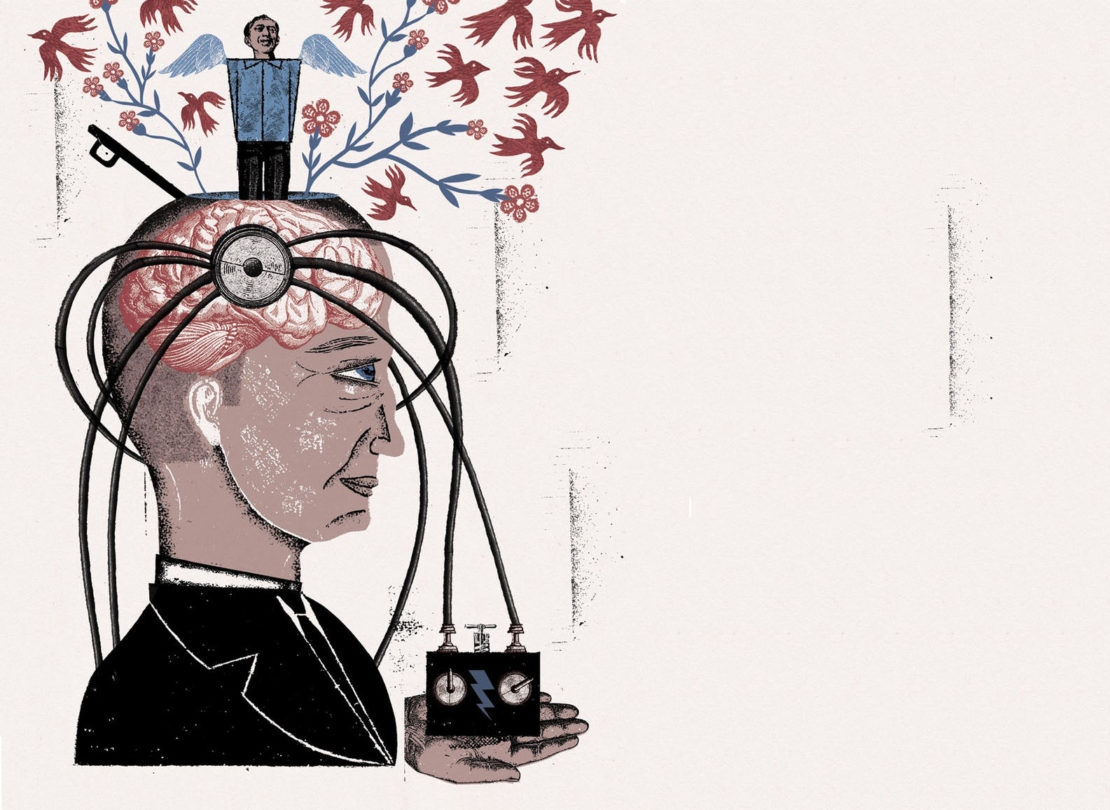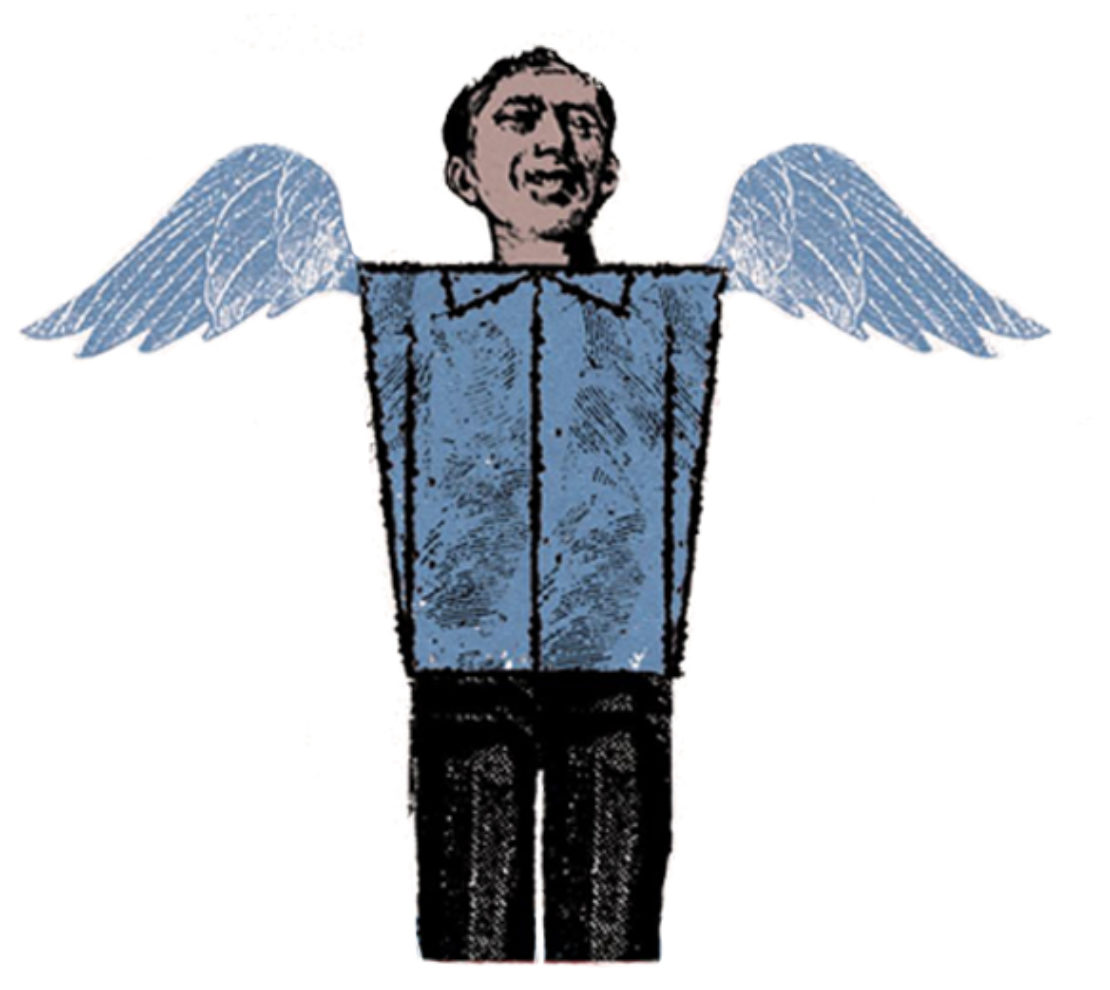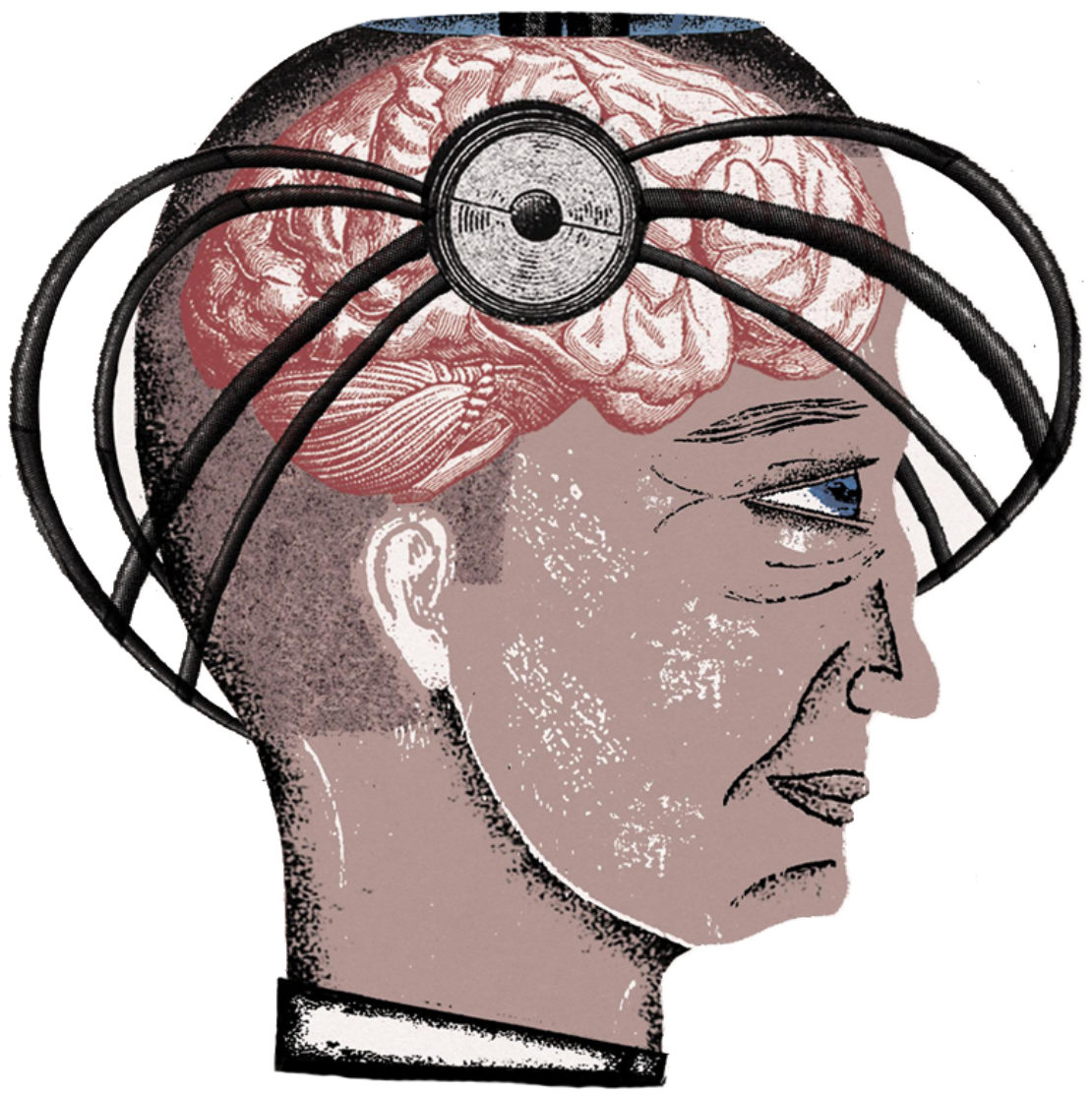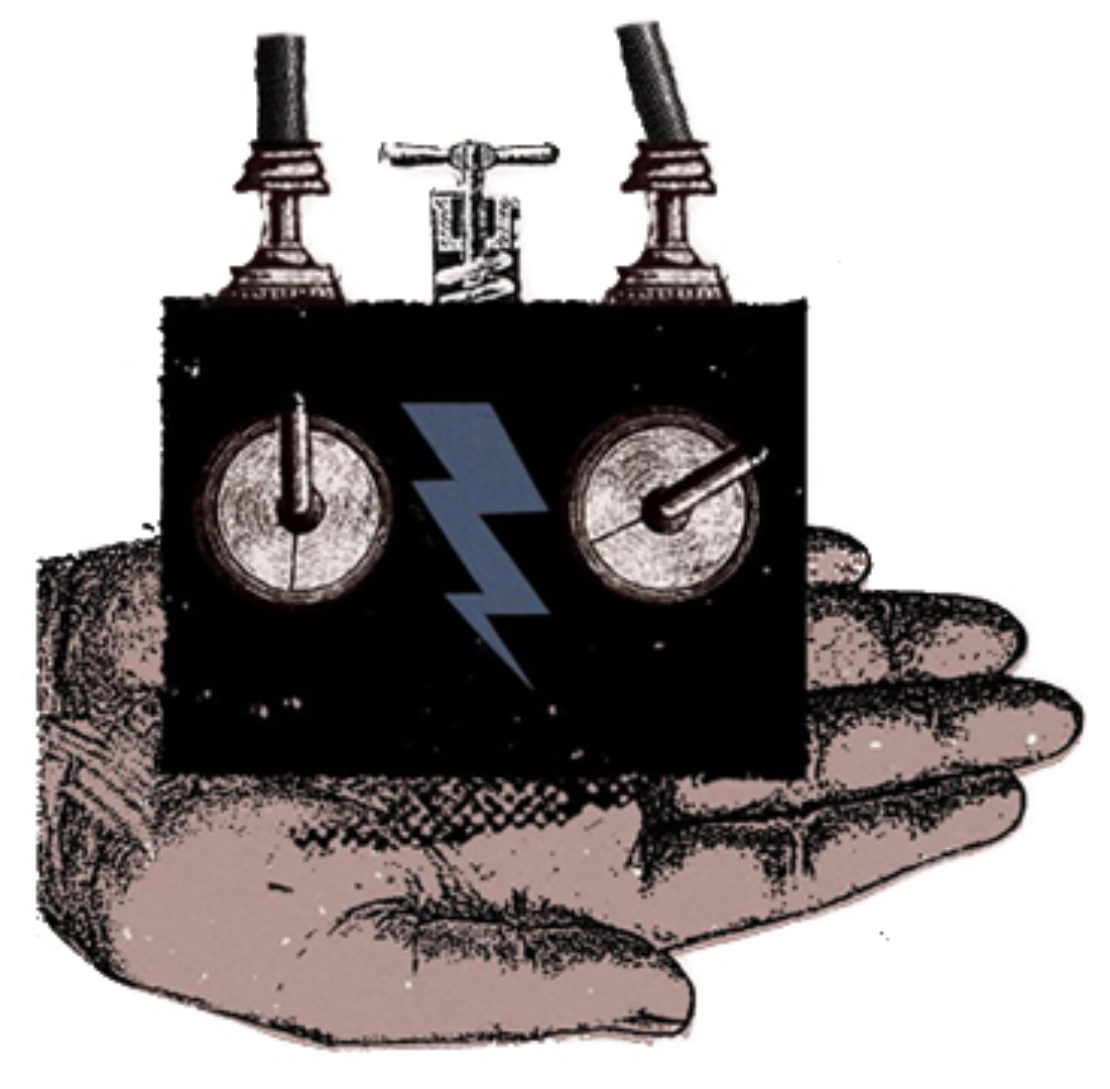
Hooking up
Emperor Claudius suffered from the most savage migraines. By AD 46, he was in his late 50s and, presumably at his wit's end from the pain, agreed that his esteemed doctor, Scribonius Largus, could try something new and a little off-the-wall.
Largus, who had his work cut out for him looking after a boss with a long list of health problems and a mercurial temper, paid a local fisherman to catch a couple of electric eels from the Mediterranean sea. Back at the palace, he held them to the emperor's temples in an attempt to quell his excruciating headaches. It is the first recorded instance of electrical stimulation being used as a medical treatment.
Listen to an audio version of this article, brought to you by Curio.io
Fast-forward 2,000 years or so to a couple of students in their early 20s in a bedroom in Leeds, using electricity in a bid to make their lives better and easier. A brain stimulation kit bought on the internet includes the wires, electrode sponges, headband and basic device needed to get them started. A 9-volt battery is not included.
Katie, 23, has suffered from anxiety and depression since she was 18. When her boyfriend Lee told her about transcranial directcurrent stimulation (tDCS), a form of neurostimulation which involves administering a low level of electrical current to the brain, she was sceptical. But Lee had heard that it could help people with mood disorders and wondered if she might benefit from it.
"The first time, I freaked out," she remembers. "I thought, 'I can't cope with putting electrical stimulations in my brain.' Lee put this machine on and, it's difficult to explain, but, everything went empty in a good way. I can't remember if I've ever felt like that. I felt relaxed and chilled inside. It was a mad sensation and an out-of-body experience."
She'd tried anti-depressants in the past but found they didn't work for her. Now she uses the kit regularly. "It's improved my life and improved my mind," she says.
Lee uses the tDCS kit for different reasons. He was intrigued by its claims to enhance learning. Motivated by his general interest in self-improvement, he bought the kit from a website for about £60. The first time he used it, he found it easier to revise for his degree. The information 'stuck' better, and for longer. He got a first.
I ask if he's concerned that zapping his brain could be dangerous. He's a bit worried – "At the end of the day, you're frying your brain" – but hasn't noticed any negative effects so far.
I can't remember if I've ever felt like that. I felt relaxed and chilled inside. It was a mad sensation and an out-of-body experience

Katie and Lee aren't alone. A number of people are busy delivering electric currents to their heads at home with online kits. Some in this DIY brain-zapping community build their own machines from scratch. If you've got basic electrical skills and know how to wire a circuit board, a kit is relatively easy to make. Garage neuroscientists do it for various reasons: to speed-learn, pick up languages quickly, treat depression, reduce anxiety, increase attention spans, soothe migraines, get smarter, improve confidence, memory and motor skills. The claims made for tDCS are varied and seemingly endless.
The device is currently being explored by medical and scientific professionals as a potential tool to help people suffering from a number of diseases and symptoms, from depression to epilepsy. While scientists aren't completely sure how it affects behaviour – and there are sceptics – we know that a flow of electrical current affects the way the brain works. The basic science is simple and it works like this: administering direct current to a particular part of the brain makes it more likely that neurons will fire under the anode (positive); and less likely they will fire under the cathode (negative).
"What we can say about tDCS is that it does change how our brain works. It changes the level of excitability of different brain regions. We can say that with certainty," says Roi Cohen Kadosh, a research lecturer at the Department of Experimental Psychology at Oxford University.
tDCS has been used for over 100 years but was overshadowed for much of the 20th century by ECT and drug therapies. It became popular again in 2000 with the increased use of new brain-imaging techniques like fMRI; and other brain stimulation methods like TMS (transcranial magnetic stimulation). Clinical trials and studies of the effects, veracity, safety and future of tDCS continue to mushroom and, this year, it looks like kits might become readily available for the first time.
When I first heard about tDCS, it conjured up stereotypical images of electroconvulsive therapy from Sylvia Plath's The Bell Jar and the film of One Flew Over the Cuckoo's Nest (which the Royal College of Psychiatrists said did for ECT what Jaws did for sharks). But as I read more about it, I learned that the current normally used is extremely low (1 to 2milliamps compared with typically 800milliamps in ECT). It sounded, within a controlled environment, safe. Maybe I should try it.
To University College London's Institute of Cognitive Neuroscience, then, in Queen Square, to act as a guinea pig for doctoral student Camilla Nord. She is running a trial on the effects of tDCS when used alongside cognitive behavioural therapy (CBT) to treat depression. Would I leave her office feeling fitter, happier and more productive? I climbed the stairs feeling excited. My mood changers these days are limited to coffee and sugar. Would I get a buzz off electricity? I secretly hoped so.
To improve the accuracy of her result, Nord is using is a 'double blind' experiment, in which half her volunteers receive sham tDCS. No one, including Nord, knows whether it is a placebo or not.
According to Nord, "tDCS is this amazing tool and a way that neuroscience can help psychiatry." She's hoping to find that tDCS augments the effect of CBT, making both treatments more successful than they are in isolation. She's confident that by directing an electrical current at the neurons in the dysfunctioning area of the brain that causes depression, she can make that area more active.
What we can say about tDCS is that it does change how our brain works. It changes the level of excitability of different brain regions

I sign a form and confirm that I don't have a history of seizures. Nord takes down my hair and puts a headband on my head. She positions two sponges dipped in saline solution on the front of my skull where the frontal cortex sits under my cranium. A towel around my neck mops up the water dripping down. This is definitely not a high-fashion look; I feel like Frankenstein's monster.
She presses the button. "I don’t feel anything." Zap. "Should I feel something now?" Zap. She explains that there might be some tingling of the skin and continues to administer the current to my cranium. Zap, zap, zap. I feel tingling but it could just be the cold water on my scalp.
Then I'm given a brain-training n-back test on a PC in the corner. It's quite hard and the room is hot. I'm not very good at it and feel flustered. I expected heightened senses or a sharpening of my brain but I almost take a massive slug of the saline solution by accident. This isn't going as I'd hoped. Aren't I supposed to feel smarter?
"Saying tDCS makes you smarter is an unhelpful myth; but that doesn't mean that tiny, specific tDCS might not make you better at tiny, specific things," Nord explains. "Nor do smart drugs. They might make you better at concentrating, they don't make you smarter."
We talk about recent studies that have cast doubt on the efficacy of tDCS but Nord is optimistic that neuroscience can help people with depression and other psychiatric conditions. She is worried about people using the kits at home, however. "tDCS should be more readily available if that means people can buy safe machines. Because of the publicity about tDCS you get people fabricating their own machines at home with seriously unusual side effects."
I leave feeling relaxed and a bit spaced out, but that might be tiredness from a few hours spent talking about complex science. I only had the electrical current for about five minutes. Perhaps when I try tDCS with the DIY community in east London they might be a little more cavalier with their dosages and times, although now I'm feeling a little more cautious after Nord's warnings; I don’t really want skull burn.
The next morning I talk on Skype to Xavier, a French national, who took part in Camilla's trial. Last summer, while working in the City as a banker, he began feeling depressed. He went to a GP who prescribed him pills. They didn't work. The doctor offered CBT but there was a six-month wait. Desperate, he took up the offer to be part of the UCL experiment that offered CBT alongside tDCS.
"My friends thought it sounded a bit crazy but I thought, 'I need to find a solution'," he says.
Although he doesn't actually know whether the tDCS he received was real, Xavier believes it was because he felt burning on his scalp. He's much better now and looks happy and healthy. I ask if he'd use electricity again. "In a controlled environment," he says. "The brain is the greatest asset we all have so you have to be careful."
It is people like Xavier that Marom Bikson, professor of biomedical engineering at the City College of New York, hopes will benefit from tDCS as it becomes mainstream.
Bikson is a leading voice in the field of tDCS. He says: "I think, I hope, that tDCS has a huge potential to remove human suffering and that's why I'm very anxious for it to be made available."
As well as depression, he mentions fibromyalgia, neural pain and status epilepticus as serious health problems that might be treated with electricity. Depression is where he's seen the most encouraging results.
"That's why I'm not comfortable waiting 15 years for us to work out all the scientific questions. There are people suffering today who could benefit from this technology. Their lives are shattered by their diseases and it's so unfortunate that something that might – big might – be able to help them, and is considered so safe that they'll use it on college students, is not available."
But he's confident this is going to change very soon. "What is needed is clinical-grade tDCS which should be made available for people to use at home. That path needs to open up and I think it will later this year."
Saying tDCS makes you smarter is an unhelpful myth; but that doesn't mean that tiny, specific tDCS might not make you better at tiny, specific things

In April, I attend Magstim's Neuroscience Conference 2015 at Oxford University. (Magstim is a company specialising in TMS devices, so tDCS is on the agenda.)
I also meet Nick Davis, a psychology lecturer at Swansea University who is studying the effect of tDCS on motor control. I ask him how we can use brain stimulation to improve performance in sport.
Davis gives tennis as an example, and the amount of time tennis players spend getting their serve right. Imagine if they could use tDCS to reduce this. "It could free up their time to do other things and make them better players," he says.
Of course that raises a question of ethics. Would we count that as cheating? Would we put it in the same category as using steroids? And what of the difference between sport and artistic performance?
"Say I give you cocaine and you run faster in a sprint, we would consider that cheating," he says. "But if I give you cocaine and you write a better song, we don't think that's cheating, we just think that's being in a band. We don't care that an album was made on drugs. In sport we care about the effort people put in so anything that improves your effort is cheating."
The comparison between cocaine and electricity leads me to wonder how addictive tDCS could be. Most of us resort to drugs when we want to change our mood, whether it's caffeine, a glass of wine or something stronger. Most of us want to change something about our brains. I like changing my mood. I like fixing on stuff. I'm conscious that my interest in tDCS is triggering a kind of appetite or excitement for a potential new way of hushing my racing head and balancing my mood.
But Davis doesn't think electricity could be addictive: "In the same way that performing a ritual can become not addictive but part of your behaviour, there is that potential. Is it addictive in the same way as nicotine and alcohol? I don't think so." Bikson agrees, describing the doses being used currently as 'baby aspirin' level.
Bikson's talk at Magstim, Are We Ready to Go Home?, is about taking tDCS into people's houses safely. He argues that tDCS is deployable, simple and safe, that there is considerable patient demand for it, and that we need to stop people resorting to home-made kits, as even low-intensity stimulation can cause harm when applied with bad technology.
The numbers Bikson quotes are persuasive: 40,000 tDCS sessions have taken place over the last 15 years with no serious adverse effects documented in nearly 1,000 studies published.
He suggests a number of ways to regulate over-the-counter devices: single-use electrodes, single-position headgear, or one dose stored on a single physical module. A code that unlocks the device could act like a safety lid on a bottle of Calpol.
Finally, Bikson advocates making tDCS freely available in the interests of science. As Davis says, "No one wants to stop people innovating, it's how things happen; but you've got to think about people's safety."
For people who want to try tDCS, such as the artist St Vincent, who tweeted in December that all she wanted for Christmas was a tDCS machine, how close is it in reality? "That ship has sailed, it's just a case of accelerating it," says Bikson. "People have to get used to the idea of using electricity instead of pills."
Thync System, released this month, might be the first major step. It doesn't make medical claims: it's a cognitive enhancement tool – costing $299 – that promises "to deliver pulsed neurostimulation waveform to modulate psychophysiological arousal for lifestyle or wellness applications". The manufacturers are quite cagey with information but say the devices "use neuro-signalling to induce shifts in energy and calm states within minutes". Bikson is a product advisor and a fan, though he struggles to find the words to describe Thync's effects: "It's not how coffee or wine makes us feel, it's the way electricity makes us feel."
Although tDCS is already being used in a couple of private hospitals in the US, it won't be available on prescription from your GP yet. NICE, the UK health regulator, is currently developing guidance on its use for depression; while two pivotal multi-centre trials for treating depression with tDCS are also under way. Bikson speculates that the outcomes will be "very encouraging".
The two recurring themes in my conversations with scientists are optimism about tDCS as a tool for treatment on the one hand; and concern about people experimenting at home on the other. Davis is wary of the activity of DIY enthusiasts: "It's dangerous," says Davis, "but they tend to know it's dangerous." Users on the busy DIY tDCS forum on Reddit discuss recent studies; and share personal experiences and tips about which 'montages' – how the electrodes are positioned – to use. That way you can stimulate the specific parts of the brain governing anything from numerical reasoning and improved socialisation to the migraine pain and the reduction of cravings. It is a mainly practical forum for individual users. "Best electrode to avoid skin burn?" is a typical query.
No one wants to stop people innovating, it's how things happen; but you've got to think about people's safety

I visit a Hackspace in east London to meet Andrew Vladimirov, a Russian neuroscientist who runs a computer security business. He's a member of Brain Hackers, a group of neuroscientists, electronics engineers and hobbyists. It is a step up from the Reddit DIYers; this group strives to enhance the field of neurostimulation and make it available to others.
The space is the closest I've ever been to Doc’s lab in Back To The Future. There's an old arcade game in one corner and a tuck shop selling penny sweets and Space Raiders crisps next to an area filled with brewing apparatus. Scientists and amateurs interested in hacking, gaming, science, technology and innovation mill around surrounded by sewing machines, 3D-printed octopi and other animals, Rubik's Cubes, lab coats, old computers, new computers, a laser cutting machine. There are wires everywhere. Outside guys fly drones next to a caravan for 'Robotics'. People next to me discuss lava lamps. The bookshelves read like poetry: Windows Security, Spring Recipes, Agile Web Development With Rails, Practical Ruby Projects, Drupal, The Definitive Guide To Grails, The Klingon Dictionary, In Code. There’s quite a few shelves dedicated to Java. It’s an open evening and there’s a warm and optimistic vibe.
Soon after Vladimirov arrives it becomes clear that he views tDCS as boring and is more interested in other ways of altering the brain, such as magnetic fields, lasers, ultrasound and alternating current. He seeks to measure brain activity simultaneously through EEG devices, including the readily available, consumer-friendly Muse and Mindwave, as well as more hackish, DIY headgear.
There is talk of nootropics (smart drugs): Vladimirov wears a locket-type container around his neck containing a couple of doses of piracetam for emergencies. Like many others in London's DIY neurostimulation community, he is a transhumanist: one who strives to enhance human life with science, health, technology and innovation.
I ask Vladimirov if I can try something and he applies a combination of millitesla range transcranial pulsed magnetic field and laser stimulation at alpha-band frequency to the back of my head for 10 minutes. He's using a machine produced by a friend in the Ukraine (where this device is apparently used in depression and anxiety treatment). Afterwards, my vision seems slightly sharper and I have a bit more energy; but I'm paranoid I've damaged my brain and I have strange dreams. I feel nauseous for the rest of the evening and the next day, though it could be from something I ate. We talk about safety and he allows that it would be possible to get into a state you didn't want to be in – say, highly alert, or very mellow – and not be able to get out. I don't think I'll be rushing to buy a kit on the internet.
Later, I catch up on the tDCS Reddit and find a plea from a bipolar patient desperate to find a montage to help him study psychology: "I read a post here, of a guy who used tDCS day before exam, couldn't study earlier because his grandpa passed away or something. Anyway. He aced on the tests. Tried finding it to know what montage he used. Can't find it," he says, asking for a "partner in this journey".
Various users offer advice, and then there's a breakthrough: "Hey, that's me!", says the guy whose grandfather's illness caused him to miss classes. It turns out he's JD Leadam, the 25-year-old CEO of Neurolectrics and creator of the Brain Stimulator: the machine used by, among others, Lee and Katie in Leeds. He gives details of the montage he uses and links out to his own Brain Stimulator site.
In a way, Leadam, the young entrepreneur, Bikson, the eminent scientist, and Vladimirov, the Hackspace pioneer, are all coming from the same place: if we can improve the brain, why shouldn't we?
A couple of days later Leadam responds to a Reddit debate about smart drugs versus tDCS: Leadam finds tDCS to be more effective. "Do I need tDCS? No. But it sure makes a hell of a difference in my life," he signs off.